This is a simple experiment that shows how Air Pressure works.
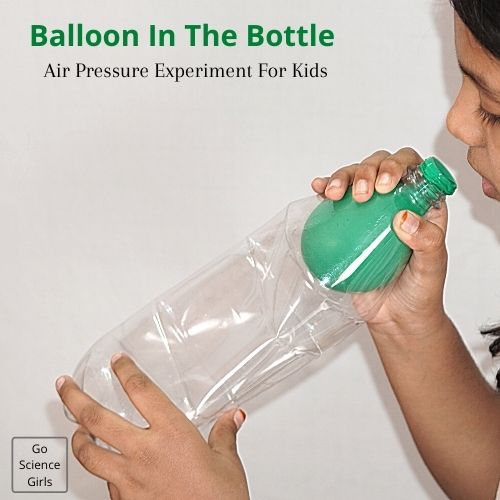
Objective: Kids learn how air and air pressure are able to expand a balloon and can have a great demonstration on air pressure.
Time Required: Just a few minutes to set up the experiment and see the magical results
Materials Required:
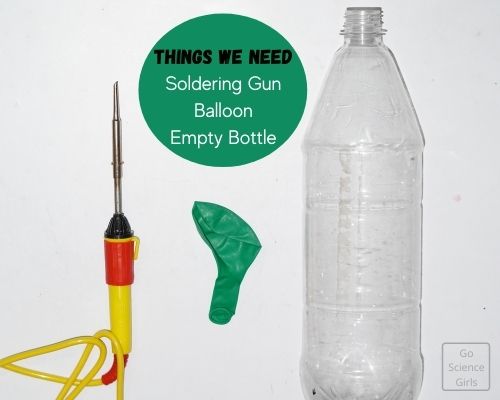
This wonderful science activity can works as a demonstrable science fair event. All we need :
1) Balloons (as many as you want to try for experiment)
2) 2 Ltr Plastic Bottle (Make sure it is empty. Any plastic bottle would do the job as shown in the pictures)
4) Nails or Any other sharp edged thing for making hole in the bottle (we used soldering iron)
Preparation
- Just keep a hole at the bottom of the 2 litre bottle using nails or any other sharp ended object available around. Ensure the hole is made close to the bottom of the bottle.
- Get the Balloons ready for the experiment. Make sure there are no holes.
- Leave the 1 litre bottle without any holes.
- After all the above preparation is done, take two balloons and insert into the two bottles. And then stretch the neck of the balloon over the bottle mouth and leave it. Such that the opening of the bottle is sealed over the bottle mouth.
Instructions to do the Experiment
Here are the easy and simple step-by-step instructions to do this spectacular science experiment.
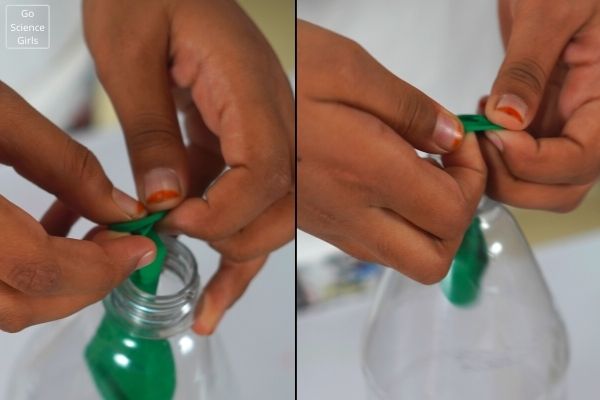
Step-1: If you are the parent of two children, you can ask them to distribute the prepared two bottles between them. If not, you can share the other bottle along with your child during investigation. Or simply, ask your child to do the experiment one after the other bottle.
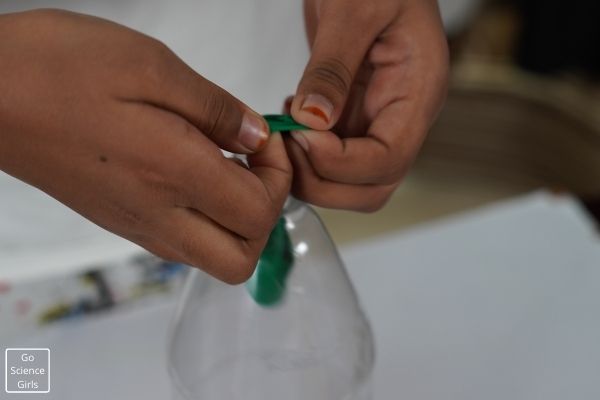
Step-2: Now, give a try to inflate a balloon that is placed inside the bottle which is having no holes. Wishing best luck but finally the balloon will not expand even after putting so much energy and efforts. There is a reason behind this which we will learn in further steps.
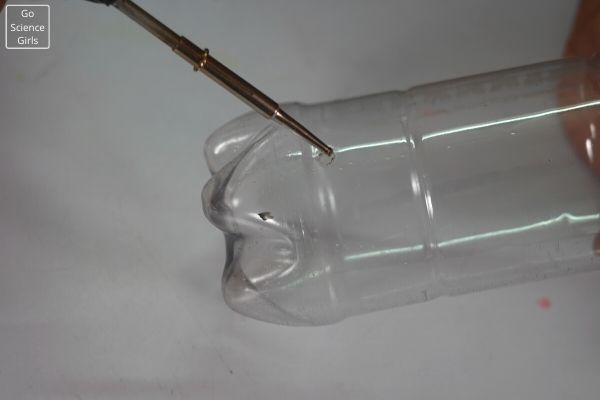
Step-3: Then, move on to the other bottle which is having a hole at the bottom. Try to blow up the balloon inserted into it. Surprisingly, the balloon blows up easily like how we do in a regular way.
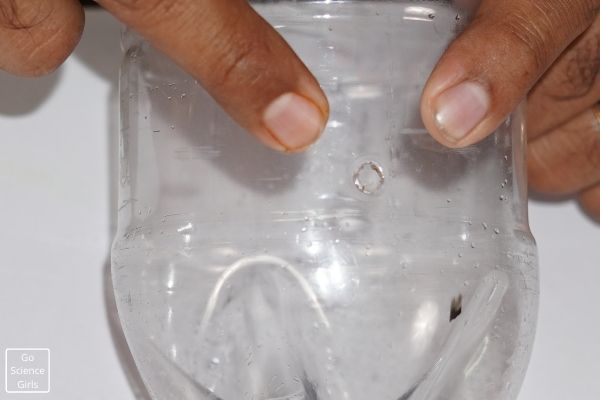
Ste-4: Next, blow up the balloon in the bottle with hole to some extent and then close the hole using your own fingers. That means you are trapping the air not to flow outside the bottle through the hole. But what happens by doing so? Well, the inflated balloon stays the same without losing any air inflated inside it. Simply put, the inflated balloon remains same and do not deflate.
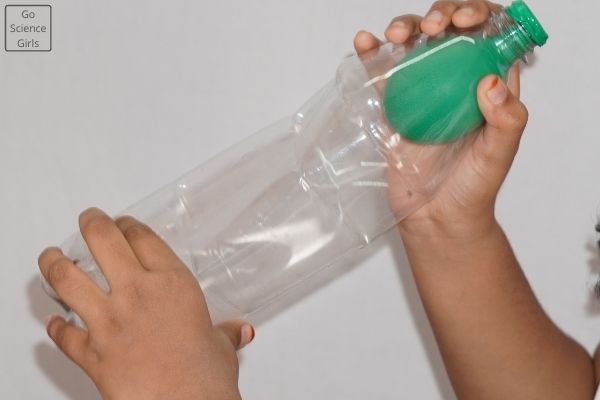
Step-5: The next step is making the balloon in the bottle with hole inflated by bringing the surrounding air into the bottle. I knew this step is little confusing but do not worry and let’s keep it simple.
Turn the bottle slightly curved and keep your mouth near the hole. Now suck out the air inside the bottle using your mouth.
Then, what happens to the balloon?
The balloon sucks the surrounding air into it and keeps inflating until you continue to suck the air out of the bottle. Amazing huh!!
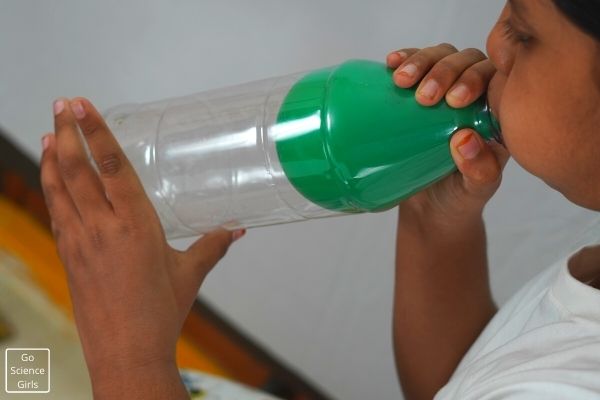
Step-6: In this step, we are going to insert a balloon with water inside the bottle. Are you wondered?
Yes, it is a bit difficult but in this activity we are going to make it simple.
Firstly, pick up a balloon and fill it with water. Then, try to insert it inside the bottle.
You will realize that you can’t insert a balloon filled with water directly into the bottle. So, we need a tricky step over here. Here is that magical step. Just insert the balloon inside the bottle and seal the opening of it by stretching over the bottle mouth.
Inflate the balloon to some extent and close the hole on the bottle tightly. Then, pour enough amount of water in to the balloon carefully through the opening of the balloon which is stretched over bottle mouth.
Make sure the bottle hole is still closed while pouring water inside the balloon.
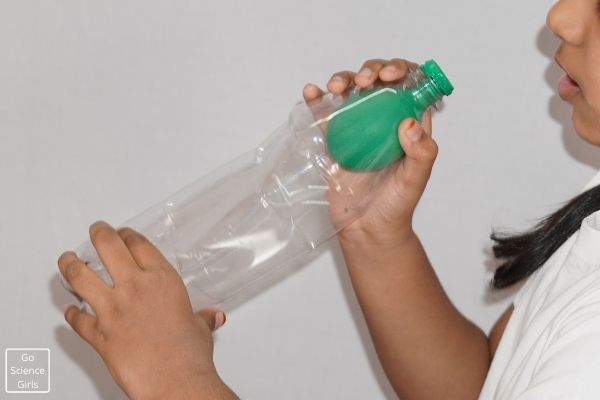
Step-7: Take off the sealed part of the balloon (i.e. opening of the balloon) off the bottle mouth and hold it tightly. Now, you can release the air trapped inside the bottle through the hole.
And give a knot to the balloon opening carefully, leave it. Instead of knot, you can also try closing the bottle mouth using the bottle cap.
Yes, put the bottle cap and tighten it until the mouth of the bottle is properly closed. Finally, you can see a balloon inside the bottle. That’s it! You are done. The science experiment “Balloon in a Bottle” is done. It is so simple right!
Science Behind This Activity
In step-2, even if you try to blow up the balloon inside the balloon, you cannot inflate it because the bottle is completely filled with air. The filled air inside the bottle does not allow the balloon to inflate.
In step-3, the hole on the bottle let the filled air particles go outside the bottle. The air particles move outside the bottle. Because the inflated balloon applies pressure on the air particles filled inside the bottle. And the air pressure is caused because the balloon is inflated.
So, the pressure created by the inflated balloon pushes the air particles move outside the bottle through the hole.
In step-4, when you close the hole, the balloon stays inflated as long as you plug it. When you remove the thumb off the hole and release the air out of the bottle, the balloon gets collapsed and deflated.
This is because the air particles moves back in to the bottle and collapses the inflated balloon by pushing the air inside balloon out of the bottle mouth. The balloon gets back to its original shape because it is made of rubber.

In step-5, when you suck the air inside the bottle through the hole using your mouth, the air particle move out of the bottle slowly. This creates pressure inside the balloon.
This pressure sucks the outside surrounding air particles in to it. And this happens through the mouth of the bottle sealed with balloons opening.
Eventually, when the surrounding air is sucked through the mouth of the bottle, the balloon starts inflating slowly. This is how the balloon is inflated on its own when the air is sucked out of the bottle.
In step 6 and 7, the water inside the balloon let it to expand and when you give a knot, the air particles stay and keeps the inflated balloon stay inside the bottle. In this way, the Balloon in a Bottle Science Experiment works out using simple ingredients.
Important Questions to Focus on:
After the experiment, ask and discuss with your little scientists about the following important key questions. It is the most important step to do whenever you finish any science experiment. It helps children to find out answers using their thinking skills.
Also, helps to improve child’s critical thinking, problem solving, and not to give up nature. So, here are the questions to discuss:
1) How do you explain an air pressure?
2) How are air and air pressure related to each other?
3) How air pressure and air makes a balloon inflate?
4) What could be the reason behind making a balloon expand in a bottle?
5) Why there is air movement inside and outside the bottle?
Interested in more Air Pressure Activities:
FAQ’s
The hole punched on the bottle offers an opportunity to the air trapped inside the bottle to let go freely. This creates low pressure inside and at the bottom of the bottle.
When the hole is closed with your fingers, there is high pressure created inside the balloon. And this high pressure created sucks the surrounding air inside the balloon and keeps it inflated.
Because the high pressure air is pushed downwards and harder when compared to the low pressure air at the bottom of the bottle. Thus, the balloon stay inflated in the bottle.
A balloon is made out of latex and rubber material. When you try to inflate a balloon, it can expand maximum to its elasticity point and the pressure reaches till 810 mmHg.
If you still inflate the balloon it can expand up to 820 mmHg, 830 mmHg and then slowly to 830 mmHg of maximum pressure point.
At the last, when you still pop up a balloon beyond its maximum pressure and elasticity point of 840 mmHg, the balloon gets blasted.
Inflating a balloon means you are actually inserting a variety of gases inside the balloon. Most importantly, Helium is the gas which is mostly goes in to the balloon.
The gases inside the balloon creates pressure and this pressure goes on increasing if you inflate a balloon.
As a result of increase in pressure, the balloon expands and gets inflated.
The maximum pressure point up to which a balloon can hold air pressure ranges between 820 mmHg – 840 mmHg.
Absolutely no, the pressure inside the balloon is not same as outside the balloon. There is a pressure difference between outside and inside the balloon.
The pressure outside the balloon is lower than the pressure inside the balloon.
The best example is: when you poke a balloon with a sharp ended object, there is an out flow of air from inside to outside the balloon. This just happens because of air flow from higher pressure to lower pressure.
When there is lower pressure inside the balloon and higher pressure outside the balloon, then the air flow happens from outside to inside. And if the pressure is same from outside and inside, then there wouldn’t be any air flow in to the balloon.
Air pressure inside the balloon is created depending on many factors. 1) Balloon Size 2) Volume inside the Balloon 3) Material of the Balloon.
If the balloon volume is more, then the pressure created inside the balloon decreases. And if the balloon made out of elastic material, then the air pressure develops inside the balloon in high amount.
The first reason behind deflating balloon is: differences in the air pressure surrounding, inside, and outside the balloon.
When there is high pressure inside the balloon and lower pressure outside the balloon, then the balloon starts deflating. The second reason includes: when the balloon is inflated the elastic nature of the balloon surface gets expanded and becomes thin.
The thin surface of the balloon is the reason to form tiny and invisible holes on the balloon. Through these tiny holes, the air particles start diffusing and eventually escapes from the surface of the balloon.
Air filled and Helium filled balloons vary while holding the air inside. The balloons that are nicely filled with air and tightly packed will hold the air stay for 6-8 weeks.
Latex balloons which are filled with helium will stay up for 8-10 hours. Whereas Helium-filled Mylar balloons will hold the air and float for about 3-4 days.
Barometer is the instrument used to measure and record the changes in the air pressure. And it is firstly invented during 1660’s.
The original version of the instrument works on the readings given by the mercury that is filled in the small bowl.
You will see more mercury inside the tube when there is high pressure. This is how the air pressure readings are calculated.
When the readings on barometer reaches till 30 inches Hg indicates the air pressure is Normal. Low pressure readings are recorded at 27.23 Hg whereas the high pressure readings are considered at 30.7 Hg.
The air inside the balloon is compressed when you fill a balloon with air.
This packed down air due to compression is proved to carry heavier loads same as air capacity under standard atmospheric pressure.
As a result, the balloon with air in it heavier than a balloon without air.
